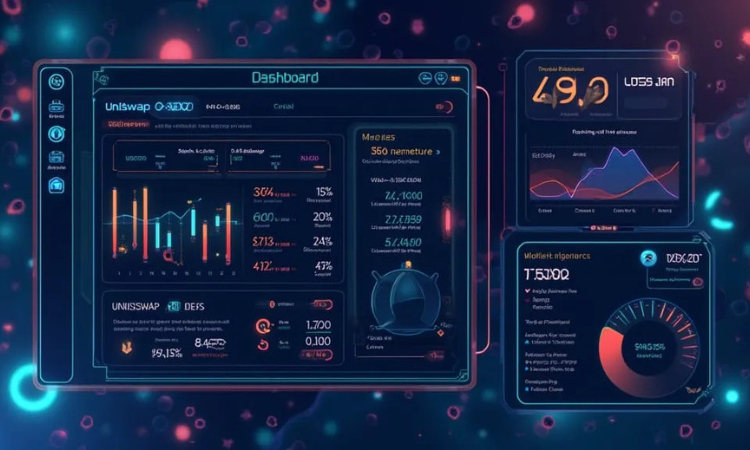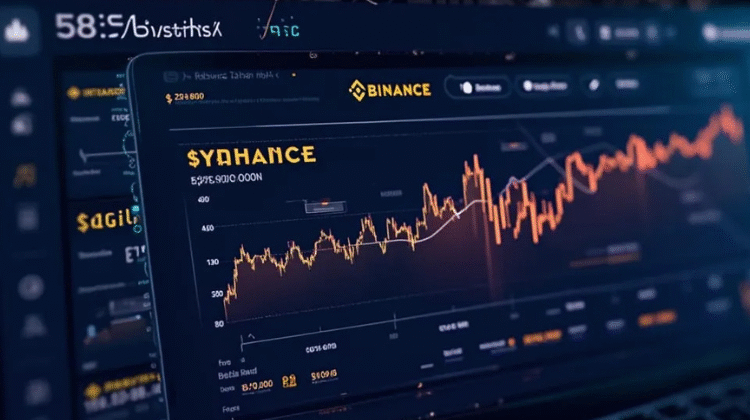Crypto Arbitrage
💡 What Is Crypto Arbitrage?
Crypto arbitrage is a trading strategy where investors exploit **price differences** for the same cryptocurrency across different platforms or markets.
In simple terms, it’s about **buying low on one exchange and selling high on another**—pocketing the difference as profit.
Unlike traditional investing or HODLing, crypto arbitrage doesn’t rely on market trends.
Instead, it capitalizes on **short-term inefficiencies** in the pricing of digital assets.

💡 Why Crypto Arbitrage Still Works in 2025
Although the crypto industry has matured over the past decade, arbitrage is still **very much alive** in 2025. Here’s why:
– Volatile markets still create rapid price gaps
– Cross-border exchange differences are common
– Decentralized exchanges (DEXs) often lag behind centralized ones in price updates
– New tokens and thinly traded pairs frequently present short-lived opportunities
– Arbitrage bots and trackers are more advanced and accessible than ever
Even with more sophisticated markets, price inefficiencies still appear regularly—especially in **low-liquidity altcoins** and during **high-volume news events**.
💼 Real Ways to Make Money with Crypto Arbitrage in 2025
Here are the three most effective methods of crypto arbitrage you can use today:
✅ 1. Manual Arbitrage (Great for Beginners)
Manual arbitrage involves manually spotting price differences between two exchanges and executing trades yourself.
Example:
Buy Bitcoin at $30,000 on Binance → sell it at $30,300 on Kraken.
Tools:
– CoinMarketCap Arbitrage Tracker
– Coingapp
– Exchange dashboards and trading view charts
Pros:
– Full control over trades
– Low startup capital ($100–$500)
– Great learning experience
Cons:
– Slower execution
– Requires constant monitoring
– Can miss opportunities if not quick

⚙️ 2. Bot Arbitrage (Semi-Passive Income)
Crypto arbitrage bots scan multiple exchanges in real-time and execute trades automatically when profitable opportunities appear.
Popular Platforms:
– Bitsgap
– HaasOnline
– ArbiSmart
These bots connect to your exchange accounts via API and handle trades on your behalf.
Pros:
– 24/7 trading potential
– Fast execution
– Scales easily
Cons:
– Setup requires technical know-how
– Subscription costs or commissions
– Risk if bot logic fails during volatile moves
🌐 3. DeFi Arbitrage (Advanced Strategy)
DeFi arbitrage uses decentralized exchanges and sometimes flash loans to exploit pricing inefficiencies across liquidity pools.
Examples:
– Swapping USDC to DAI at a profit between Uniswap and SushiSwap
– Using **1inch** to route optimized trades
– Flash loan arbitrage through protocols like Aave or DyDx
Pros:
– Huge potential profits
– Unregulated and decentralized
– New opportunities appear daily
Cons:
– High gas fees (especially on Ethereum)
– Smart contract risk
– High learning curve

⚠️ Common Risks and How to Avoid Them
Even though arbitrage seems low-risk, there are several pitfalls that traders must avoid:
1. Network Delays – A few seconds of delay can turn profit into loss
2. Withdrawal Fees – High withdrawal or gas fees can erase gains
3. Exchange Limitations – KYC issues or withdrawal limits can stall trades
4. Fake Bots/Scams – Always research and test tools before trusting them
5. Market Volatility – Sudden price changes can close arbitrage windows instantly
✅ Pro Tip: Always do a **test trade** with small amounts to confirm execution, fees, and timing before scaling up.
📈 How Much Money Can You Make?
Profit margins in crypto arbitrage typically range from **1% to 5% per trade**, depending on the market and tools used.
While that might seem small, consider this:
– Frequent trades compound profits over time
– With $500 capital and 3% gains per trade, a few trades per week can add up to serious monthly income
– Bots and automation can scale these trades across dozens of markets simultaneously
The key is **consistency and capital management**—not chasing big wins.
🧠 Expert Tips for 2025 Arbitrage Success
1. **Use stablecoin pairs** (e.g., USDT/USDC) to reduce price volatility
2. **Split your funds across exchanges** to avoid time delays
3. **Use platforms with low trading and withdrawal fees**
4. **Stay updated on new token listings**—they often come with big arbitrage gaps
5. **Always check order book depth** before executing large trades
🚀 Getting Started: Your Quick Crypto Arbitrage Roadmap
Want to start today? Follow these 5 steps:
1. **Choose two reliable exchanges** (e.g., Binance + Kraken)
2. **Deposit a small balance** ($100–$500) in stablecoins
3. **Use a free arbitrage tracker** like Coingapp
4. **Practice manual trades** to learn the flow
5. **Scale with bots or faster strategies** once you’re confident

🧩 Final Thoughts: Arbitrage Is the Hidden Edge
“In crypto, it’s not always about buying and HODLing. Sometimes, the edge is in the inefficiencies.”
Crypto arbitrage in 2025 remains a powerful way to earn **steady, low-risk income**, even in a volatile market.
Whether you’re a beginner testing the waters or a seasoned trader automating with bots, this strategy can become a **profitable part of your crypto playbook.**
Have you tried crypto arbitrage?
Drop a comment below and share your favorite tools, exchanges, or strategies—we’d love to hear from you!
And don’t forget to subscribe to **Crypto Kryptonite** for more deep-dive guides, strategy breakdowns, and smart ways to build wealth in the crypto space.









